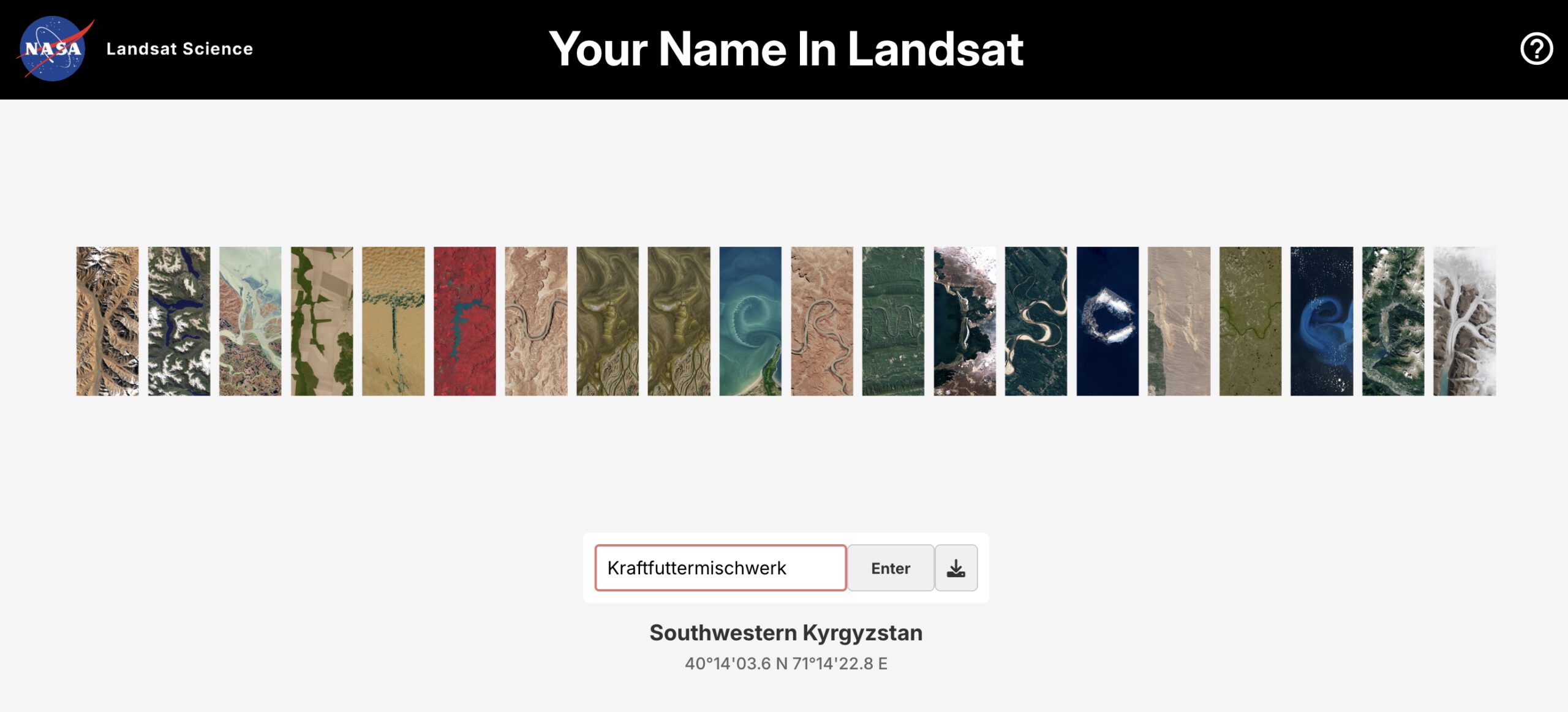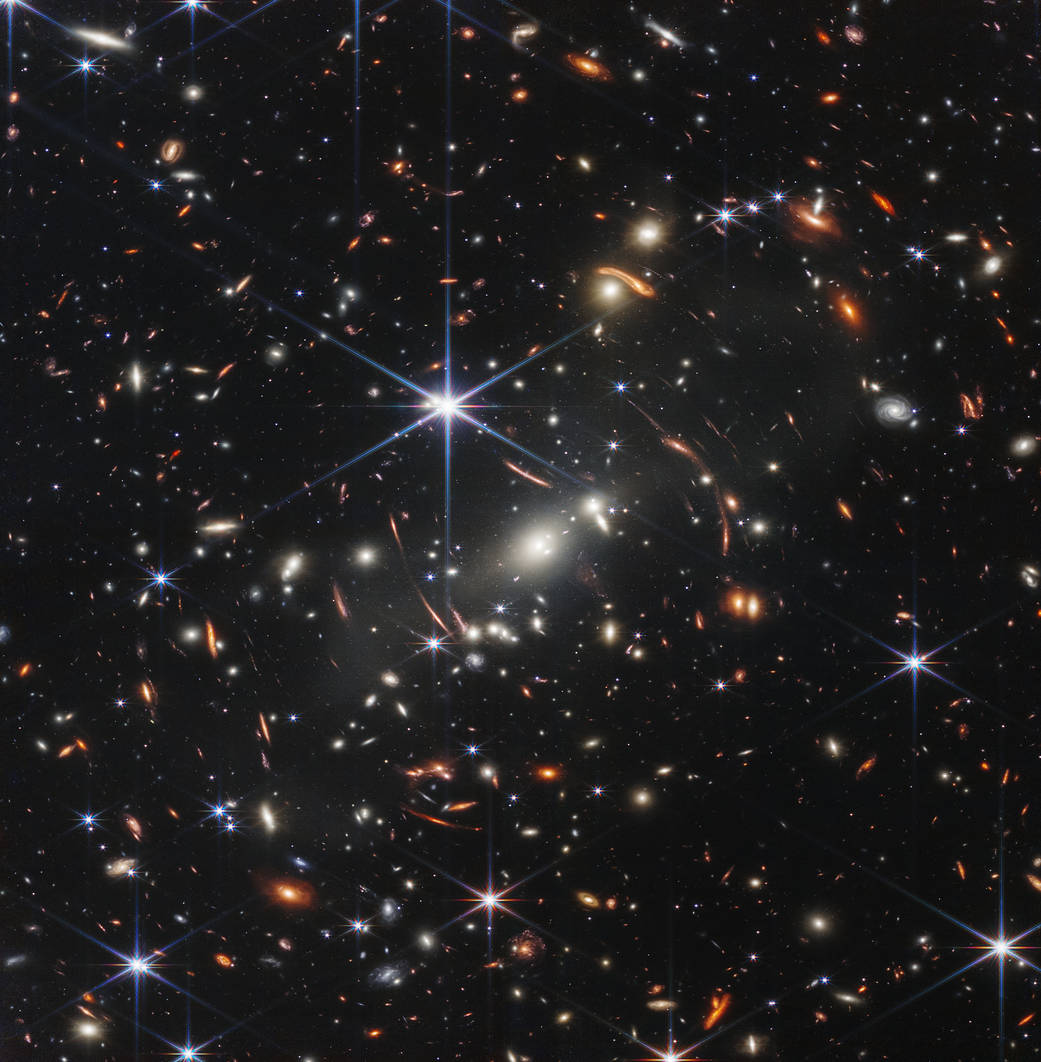
Your Name In Landsat zeigt Buchstaben in der Summe als Wörter an, die sich aus Satelliten-Aufnahmen der ganzen Welt zusammensetzen. Nicht mehr, nicht weniger.
The satellite images used in this interactive are part of Landsat’s extensive record, spanning more than 50 years.
Landsat-Next, targeted to launch in 2030, will build upon the legacy of Landsat by providing even more detailed and frequent observations of Earth.The Landsat series of Earth-observing satellites are jointly managed by NASA and the U.S. Geological Survey (USGS).
(via Book of Joe)
Einen Kommentar hinterlassen


 (@shannonmstirone)
(@shannonmstirone) 